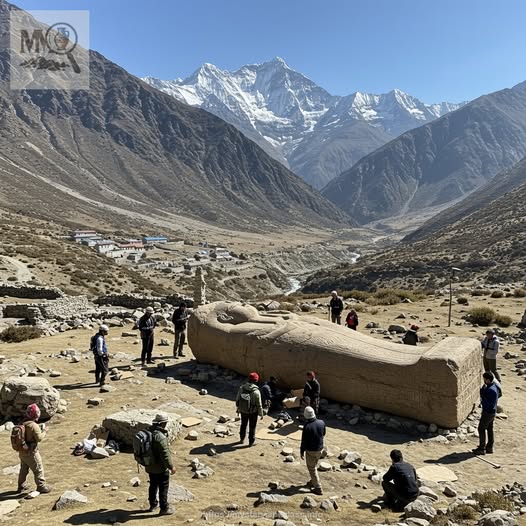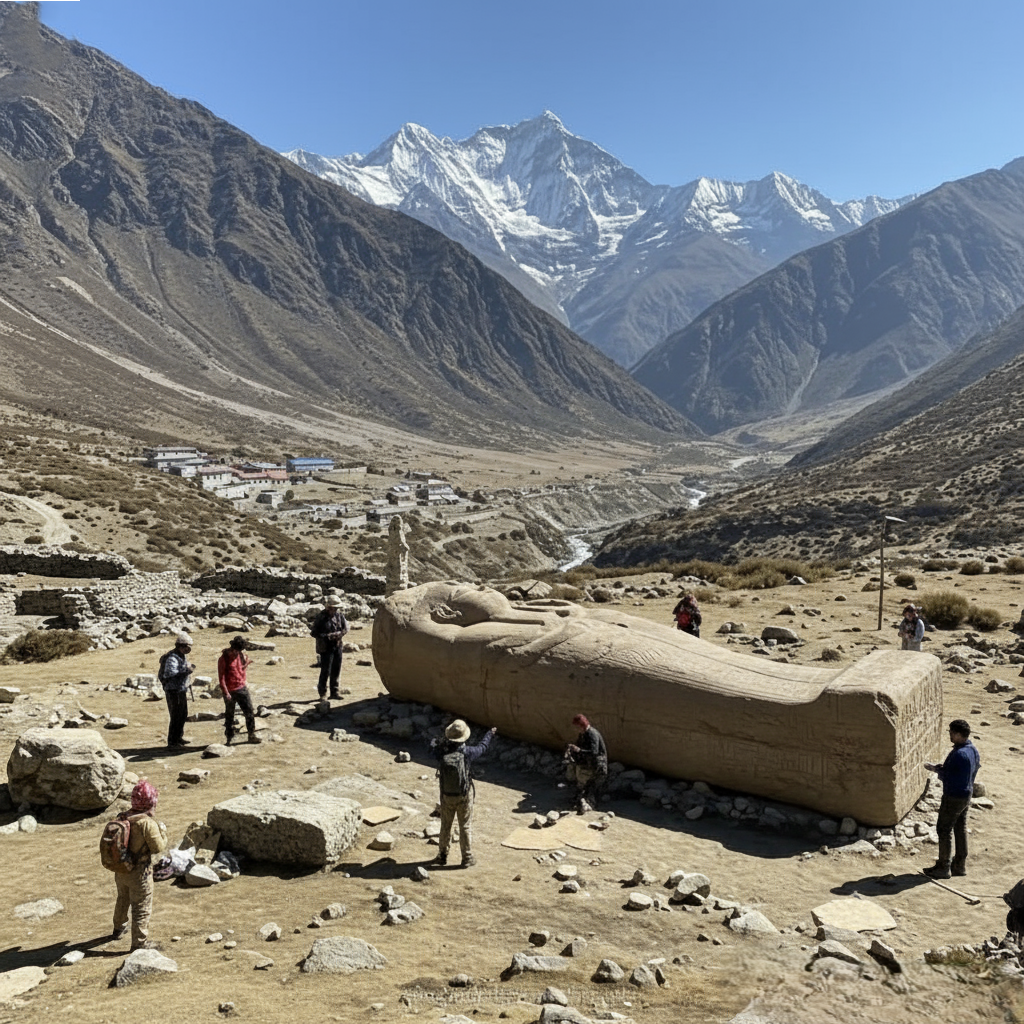BREAKING REPORT: Enormous Stone Sarcophagus Unearthed Amid the Himalayan Peaks
- Thuong
- October 11, 2025

BREAKING REPORT: Enormous Stone Sarcophagus Unearthed Amid the Himalayan Peaks
A discovery of staggering magnitude has emerged from the frozen heart of the Himalayas, where an international team of archaeologists has uncovered a massive stone sarcophagus embedded deep within an ice-locked valley of Nepal’s highlands. The structure — over eight meters long and hewn from a single monolithic slab — bears intricate carvings resembling hieroglyphic and celestial symbols, yet no known culture in the Himalayan region has ever produced such iconography. The find, preserved in near-perfect condition by centuries of permafrost, is already being hailed as one of the most puzzling archaeological revelations of the decade.
A Monument Out of Time
Initial reports describe the sarcophagus as possessing remarkable precision — laser-straight edges, microscopic tool marks, and symmetrical engravings depicting human-like figures surrounded by solar discs and winged creatures. The chamber surrounding it is equally mysterious: a hollowed cavern lined with smooth basalt walls, bearing traces of heat vitrification, suggesting advanced stone-cutting methods far beyond known ancient technology. Yet the altitude of the site, above 4,000 meters, makes its construction almost inconceivable.
Experts from Nepal, Egypt, and Japan, now collaborating on-site, have confirmed that the carvings share partial similarities with Old Kingdom Egyptian iconography, though several symbols correspond to no known writing system. One panel shows a pharaoh-like figure facing a mountain sun — a motif unseen in any Egyptian tombs. The sarcophagus remains sealed, and specialists are currently employing ground-penetrating radar to analyze what lies within. Preliminary scans reveal an inner chamber of unknown depth, possibly containing metal or organic remnants.

Theories Stretch Across Continents
The discovery has reignited global speculation about ancient transcontinental contact, or even the existence of a shared civilization predating all known empires. Some scholars suggest that a migration of artisans or priests from the west might have carried Egyptian influences eastward thousands of years before recorded history. Others, more boldly, point to legends of Shambhala and pre-diluvian kingdoms, proposing that the sarcophagus may have belonged to a lineage of rulers lost to both time and catastrophe.
Meanwhile, local villagers speak of long-standing myths — of “the sleeping god beneath the snow,” a guardian entombed in ice until the stars align once more. The uncanny resemblance between those oral traditions and the newly discovered carvings has only deepened the mystery.
History Frozen in Stone
As blizzards sweep across the excavation site, the world watches anxiously. Scientific teams prepare for the delicate operation of opening the sarcophagus, though concerns about contamination and stability persist. Security has been tightened, and no footage has yet been released to the public — fueling theories of deliberate secrecy.
Whether this monument represents an isolated masterpiece, an ancient intercontinental connection, or evidence of a forgotten epoch of global civilization, one truth stands clear: the Himalayas may have just surrendered a secret that could redraw the boundaries of human history itself.
#AncientDiscovery #LostCivilization










